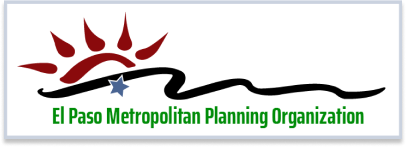| Functional Object |
Description |
User Defined |
| CV On–Board Cargo Monitoring |
'CV On–Board Cargo Monitoring' monitors the location and status of the commercial vehicle and its cargo. It sends the collected data to appropriate centers and roadside facilities, including emergency management in the case of HAZMAT incidents. Depending on the nature of the cargo, it may include sensors that measure temperature, pressure, load leveling, acceleration, and other attributes of the cargo. |
False |
| CV On–Board Drayage Support |
'CV On–Board Drayage Support' communicates with the Intermodal Terminal, Fleet and Freight Management (dispatch), and third party services to support efficient drayage operations. This application provides information to the commercial vehicle driver identifying loads and efficient schedules and routes for transport to avoid terminal congestion and minimize bobtail/dry runs. It provides information to dispatch on current truck/equipment/load status. |
False |
| CV On–Board Electronic Screening Support |
'CV On–Board Electronic Screening Support' exchanges information with roadside facilities, providing information such as driver, vehicle, and carrier identification to roadside facilities that can be used to support electronic screening. Pass/pull–in messages are received and presented to the commercial vehicle driver and screening events are recorded. Additional information, including trip records (e.g., border clearance information), safety inspection records, cargo information, and driver status information may also be collected, stored, and made available to the roadside facility. |
False |
| CV On–Board Safety and Security |
'CV On–Board Safety and Security' collects and processes vehicle and driver safety and security information and provides safety and security information to the Fleet and Freight Management Center. It also supplies this information to the roadside facilities both at mainline speeds and while stopped for inspections. Safety information may also be provided at predetermined trigger areas using wireless communications. The capability to alert the commercial vehicle driver whenever there is a critical safety or security problem or potential emergency is also provided. It also supports on–board driver safety log maintenance and checking. |
False |
| CV On–Board Trip Monitoring |
'CV On–Board Trip Monitoring' provides the capabilities to support fleet management with automatic vehicle location and automated mileage and fuel reporting and auditing. In addition, this equipment is used to monitor the planned route and notify the Fleet and Freight Management Center of any deviations. Freight–specific traveler information and restrictions are also collected and reported to the driver to support the trip. |
False |
| Vehicle Basic Toll/Parking Payment |
'Vehicle Basic Toll/Parking Payment' includes the traditional on–board systems that pay for tolls and parking electronically. It includes the 'tag' in–vehicle equipment that communicates with the toll/parking plaza and an optional interface to a carry–in payment device. See also 'Vehicle Payment Services', which provides a broader range of payment services. |
False |
| Vehicle Payment Service |
'Vehicle Payment Service' supports vehicle payments including VMT– and zone–based payments and payments for other services including fuel/charging services, tolls, and parking. To support VMT–based payment, this application tracks the location of the vehicle at specific times and reports this VMT data along with vehicle identification. A variety of pricing strategies are supported, including strategies that include credits or incentives that reward desired driving patterns and behavior. The onboard equipment supports secure short range communications with connected vehicle roadside equipment to support secure payments. |
False |
| Vehicle Platoon Operations |
'Vehicle Platoon Operations' provides the capability for vehicles to operate in cooperative platoons with short fixed gaps and a designated lead vehicle. These capabilities are provided by systems on board the vehicle that coordinate with other vehicles and regulate acceleration and braking and provide higher–level functions that enable vehicles to join and depart from vehicle platoons. |
False |
| Vehicle Restricted Lanes Application |
The 'Vehicle Restricted Lanes Application' monitors and reports its own operating parameters and communicates with roadside equipment to safely enter, operate within, and exit eco–lanes and other controlled–access lanes. |
False |
